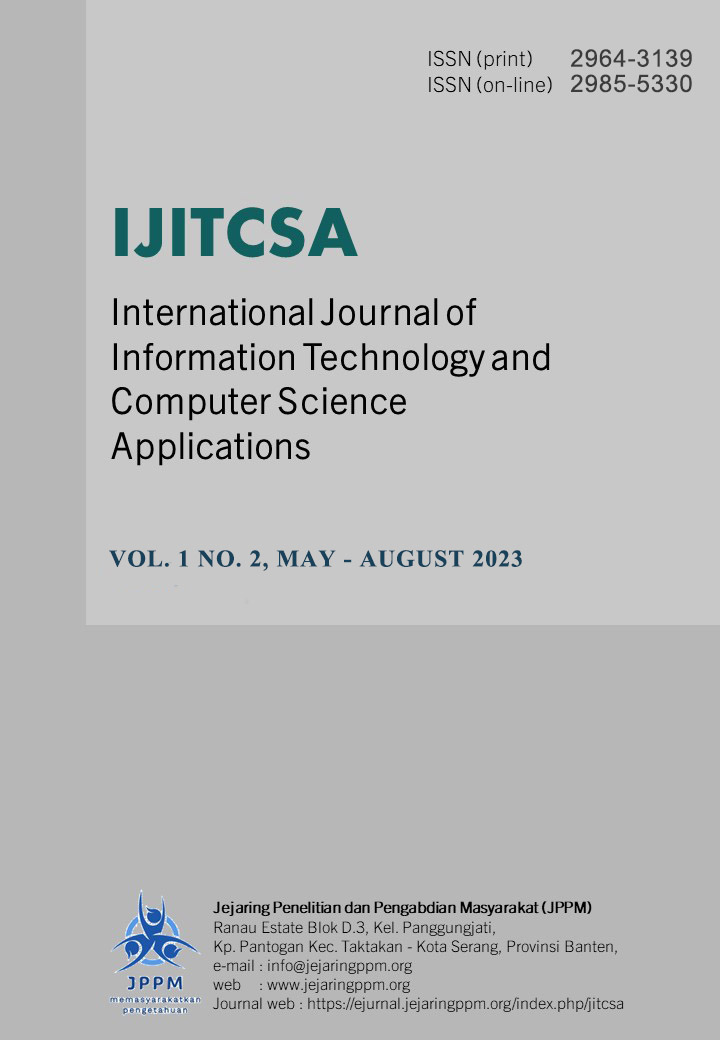Decision Support System for Teacher Performance Assessment Using the Weighted Product Method
DOI:
https://doi.org/10.58776/ijitcsa.v1i2.21Keywords:
Teacher Performance, Decision Support System, Web, Weighted ProductAbstract
The quality of teachers can be seen from the results of their performance assessment whether they have increased or vice versa. Therefore, an objective performance appraisal system is needed, in addition to reviewing performance results, the assessment system can also be a reference for determining the best teacher, so that teachers are more motivated in teaching. In making decisions on teacher performance evaluation at Pelita Insani Special Schools, they still experience problems when the process is done manually and the assessment system is less objective. So we need a Decision Support System that can produce the best alternative, can be done automatically and objectively. Practitioners This study produced a web-based decision support system that can provide alternative decision-making for school principals based on teacher performance results. By using the Weighted Product method. There are six criteria, namely: learning planning, implementing learning, assessing learning outcomes, training and guiding, additional assignments, and developing professional activities, then processed with data on teacher performance results with this method and produces teacher rankings which can be recommendations for decision making for school principals
References
Asmuni, “Jurnal Paedagogy : Jurnal Paedagogy :,” ikanJurnal Paedagogy J. Penelit. dan Pengemb. Pendid, vol. 7, no. 4, pp. 281–288, 2020, [Online]. Available: https://e-journal.undikma.ac.id/index.php/pedagogy.
J. Tam et al., “Jurnal TAM ( Technology Acceptance Model ) MODEL DEVELOPMENT IN DECISION MAKING ON VILLAGE APPARATUS PERFORMANCE MEASUREMENT AFTER,” vol. 13, pp. 57–63, 2022.
A. Khrisna Wardhani and E. Lutfina, “Application Culinary decision support system in Kudus city with weighted product method based on mobile phone,” J. Comput. Sci. Eng., vol. 1, no. 1, pp. 10–16, 2020, doi: 10.36596/jcse.v1i1.17.
Oktafianto et al., “Determining housing location using weighted product,” Int. J. Eng. Technol., vol. 7, no. 4, pp. 3563–3568, 2018, doi: 10.14419/ijet.v7i4.18838.
M. Ahsan and N. Indawati, “Implementation weighted product method to determine multiple intelligence child,” J. Phys. Conf. Ser., vol. 1375, no. 1, 2019, doi: 10.1088/1742-6596/1375/1/012038.
A. S. Nurdilla Khoirunnisa, Bachtiar Efendi, “APPLICATION OF THE WEIGHTED PRODUCT METHOD OF TEACHER PERFORMANCE ASSESSMENT IN PROVIDING LESSONS,” JURTEKSI (Jurnal Teknol. dan Sist. Inf., vol. VIII, no. 2, pp. 141–146, 2022.
D. Tosary and L. Elfianty, “Decision Support System for Teacher Performance Assessment at SMP Negeri 1 Talang Padang Using the Weight Product Method,” vol. 1, no. 2, pp. 239–245, 2021.
D. Erwandi, E. D. S. Mulyani, and A. S. Senjaya, “Sistem Pendukung Keputusan Untuk Penilaian Kinerja Guru Menggunakan Metode Weighted Product (Studi Kasus : Madrasah Ibtidaiyah Condong),” Konf. Nas. Sist. Inf. 2018, pp. 870–876, 2018, [Online]. Available: http://jurnal.atmaluhur.ac.id/index.php/knsi2018/article/view/463.
P. Rahma, M. Nasir, and A. Putra, “Implementasi Metode Weighted Product dalam Sistem Pendukung Keputusan Kelayakan Pemberian Tunjangan Profesi Guru Lanjutan pada Dinas Pendidikan Kabupaten Ogan Komering Ilir ( OKI ) Bina Darma Conference on Computer Science 2019,” Fak. Ilmu Komput. Univ. Bina Darma, pp. 263–269, 2019.
H. A. Septilia and Styawati, “Sistem Pendukung Keputusan Pemberian Dana Bantuan Menggunakan Ahp,” J. Teknol. dan Sist. Inf., vol. 1, no. 2, pp. 34–41, 2020, [Online]. Available: http://jim.teknokrat.ac.id/index.php/sisteminformasi/article/view/369.
A. Mubarok, H. D. Suherman, Y. Ramdhani, and S. Topiq, “Sistem Pendukung Keputusan Kelayakan Pemberian Kredit Dengan Metode TOPSIS,” J. Inform., vol. 6, no. 1, pp. 37–46, 2019, doi: 10.31311/ji.v6i1.4739.
A. A. Wahid, “Analisis Metode Waterfall Untuk Pengembangan Sistem Informasi,” J. Ilmu-ilmu Inform. dan Manaj. STMIK, no. November, pp. 1–5, 2020.
R. Abdillah, “Pemodelan Uml Untuk Sistem Informasi Persewaan Alat Pesta,” J. Fasilkom, vol. 11, no. 2, pp. 79–86, 2021, doi: 10.37859/jf.v11i2.2673.
A. Mubarak, “Rancang Bangun Aplikasi Web Sekolah Menggunakan Uml (Unified Modeling Language) Dan Bahasa Pemrograman Php (Php Hypertext Preprocessor) Berorientasi Objek,” JIKO (Jurnal Inform. dan Komputer), vol. 2, no. 1, pp. 19–25, 2019, doi: 10.33387/jiko.v2i1.1052.
R. Kurniawan and S. Marhamelda, “Sistem Pengolahan Data Peserta Didik Pada Lkp Prima Tama Komputer Dumai Dengan Menggunakan Bahasa Pemrograman Php,” I N F O R M a T I K a, vol. 11, no. 1, p. 37, 2019, doi: 10.36723/juri.v11i1.140.
D. Karyaningsih, D. Susandi, and E. Safaah, “Implementasi Mobile Learning Berbasis Android Kearifan Lokal Baduy Kabupaten Lebak Untuk Anak Usia Dini,” J. Tek. Inform. Unis, vol. 9, no. 2, pp. 99–110, 2021.
Downloads
Published
How to Cite
Issue
Section
License
Copyright (c) 2023 Dentik Karyaningsih

This work is licensed under a Creative Commons Attribution 4.0 International License.
Attribution 4.0 International
You are free to:
- Share — copy and redistribute the material in any medium or format for any purpose, even commercially.
- Adapt — remix, transform, and build upon the material for any purpose, even commercially.
- The licensor cannot revoke these freedoms as long as you follow the license terms.
Under the following terms:
- Attribution — You must give appropriate credit , provide a link to the license, and indicate if changes were made . You may do so in any reasonable manner, but not in any way that suggests the licensor endorses you or your use.
- No additional restrictions — You may not apply legal terms or technological measures that legally restrict others from doing anything the license permits.
Notices:
You do not have to comply with the license for elements of the material in the public domain or where your use is permitted by an applicable exception or limitation .
No warranties are given. The license may not give you all of the permissions necessary for your intended use. For example, other rights such as publicity, privacy, or moral rights may limit how you use the material.





